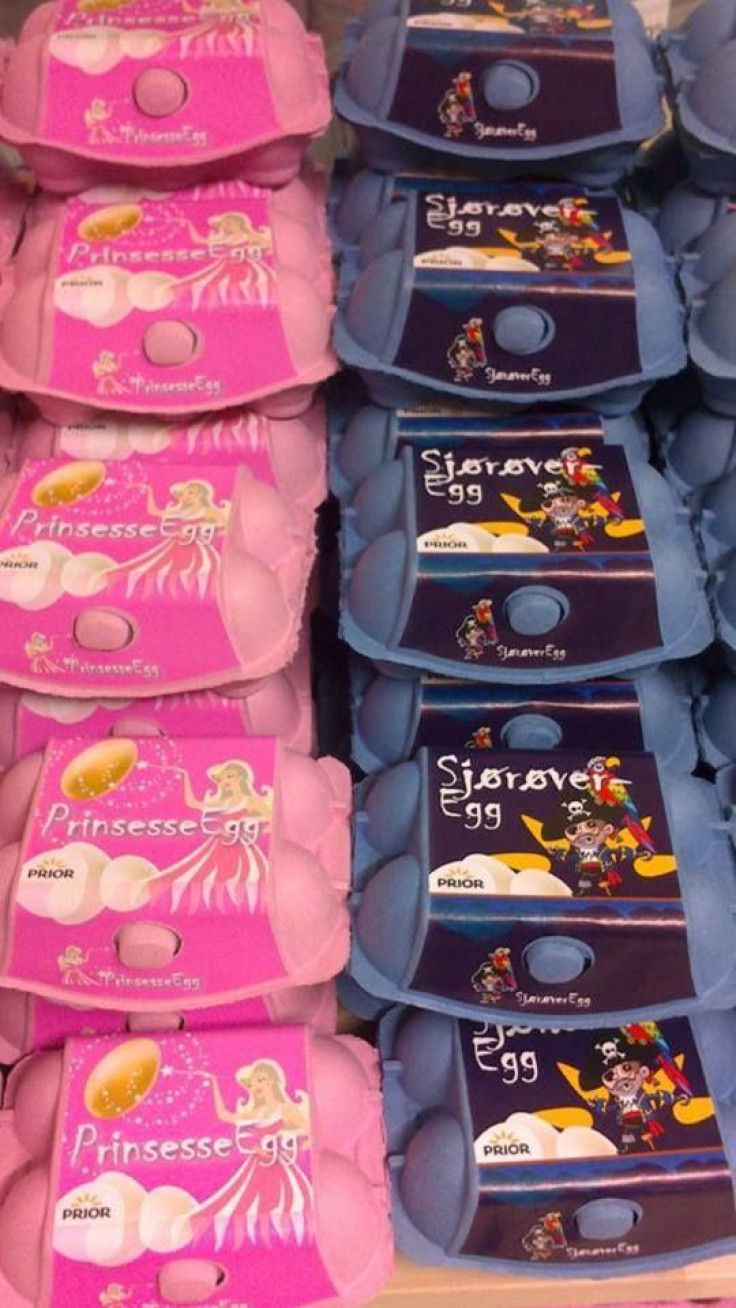Packaging Eggs For Boys And Girls? Norwegian Egg Company Markets Gender-Specific Products To Children

Norwegian media reports that Prior, a retailer of chicken and egg products, has recently launched pink princess packages of eggs for girls and blue pirate packages of eggs for boys. Although the new packaging is intended to encourage children to eat more eggs, it has also inspired ridicule from Boing Boing and other online sources such as MSN. Gender branding for children inhibits them, many argue — besides, gender has nothing to do with colors and characters.
Or does it?
Primates
A 2002 paper published in Evolution and Human Behavior found that vervet monkeys exhibited some of the same sex preferences for toys as human children.
Asserting that boys favor construction and transportation toys, while girls favor toys such as dolls, the researchers tested the vervets to see how much ‘contact time’ they had with toys typically preferred by boys (a car and a ball) and toys typically preferred by girls (a doll and a pot). The male vervets spent more time with boy-preferred toys and the female vervets spent more time with the girl-preferred toys. Meanwhile, both male and female vervets spent a comparable amount of time with the toys preferred equally by boys and girls — a picture book and a stuffed dog.
The American and English researchers suggest that the sex differences may relate to exposure to prenatal hormones, which affect visual pathways and also motivate boys toward more activity and rough physical play than girls exhibit. Perhaps, then, the pirate on the box of Norwegian eggs does appeal to the naturally more rough and ready boys. But what about color?
Color and Shape
Other researchers have explored where there might be similar inborn influences on color and shape preferences among girls and boys. In a study conducted in 2010, researchers from the University of Cambridge used a ‘preferential looking task’ to investigate the preferences for different toys, colors, and shapes among 120 infants, in three age groups: 1 year olds, 18 month olds, and 2 year olds. The researchers found that the girl infants looked at dolls longer than the boys, while the reverse was true with cars. These results did not vary with age. Yet another story emerged when the researchers tested for other features.
“There were no significant sex differences in infants' preferences for different colors or shapes,” the authors wrote. “Instead, both girls and boys preferred reddish colors over blue and rounded over angular shapes.”
The authors suggested that sex-type preference is not driven by color and shape, though the opposite may very well be true. “Girls may learn to prefer pink, for instance, because the toys that they enjoy playing with are often colored pink,” the authors wrote. Because preference and avoidance of certain colors appear to develop after infancy, the authors hypothesized that such differences may arise “from socialization or cognitive gender development rather than inborn factors.”
Working to entice children with both color and characters, Prior’s choices address both innate and socialized preferences. Whether you believe this is good or bad, it is supported by scientific evidence. Perhaps the real crime is Prior's attempt to bypass parents and market directly to children.
Sources: Jadva V, Hines M, Golombok S. Infants' preferences for toys, colors, and shapes: sex differences and similarities. Archives of Sexual Behavior. 2010.
Alexander GM, Hines M. Sex differences in response to children’ s toys in nonhuman primates (Cercopithecus aethiops sabaeus ). Evolution and Human Behavior. 2002.



























